Blood drips. Sun blazes down the yellow scorched field. There’s a musk that emanates and permeates throughout. The sounds of sticks making brutal contact and the whipping of misses reverberate in the air.
This is the story of my experience at a Donga stick fighting tournament during my time with the Mursi tribes while on my 9 day adventure through the Omo Valley of Ethiopia.
Read
- The Ethiopia Omo Valley trip planning guide
- The full Ethiopia 9 day itinerary to Omo Valley
- Ethiopia packing list guide
- Other Ethiopia travel guides
Where to stay in Addis Ababa?
- The start and end of your trip is going to include Addis Ababa. The best property in the city has to be the Hilton Addis Ababa which is super safe, comfortable rooms, great service, and in a central location.
In This Article

Children watching wince at every slash while other tribe combatants size up their enemy. As I look onwards, I am still at awe that I’m part of the circle and watching what I’m seeing.
As if straight out of a National Geographic magazine, this rare event is something that most people will never be able to see in their lifetime.

Donga Stick Fighting Tournament – A Sight Unseen
They call it Donga.
Donga is a Mursi tribe stick fighting tournament that only happens once a year. Every local village sends their top male fighters to an undisclosed location once a year for village honour.
Why you ask? As you spend more time in the villages and get to know their culture, you realize how deeply rooted honour really is. Representing your own village is these men’s chance for glory and status. Champions have a legitimate chance to become chief and to marry well.
Somehow we happened to be at the right place at the right time.
The story of how I got to watch a Donga stick fighting tournament

Day 4 of my 9 day itinerary through Omo Valley, Ethiopia started off with me stepping out of my tent to find Chief Nogali lying comfortably on animal skin with AK-47 within arms length. As his guests, he takes security quite seriously.
The start of a new day
The sun was barely creeping up behind the Mursi tribe huts and I could hear the slow ringings of cowbells. Just your typical day right?

The morning was the type of unusual that you come to expect from Ethiopia. I set up my tripod to take sunrise photos and eventually one male tribesman came by to see what I was up to. He was fascinated with the camera and my GoPro. It was quite the comedy as I tried in vain to explain what I was doing in various made up hand signals and exaggerated enunciations.
All of this eventually lead to the realization that the reason why he kept showing me five fingers and pointing to himself was because he really just wanted 5 Birr for photos. That is the reality of being a tourist here. I played ignorant and continued with my shooting.

Once everyone was up, we spent the morning packing, eating some morning fruit, and watching the men of the tribe going about their morning cattle herding routine. Little kids were walking around unclothed. Women made their way over to our camp to say hello to the guides and find out if there were any water bottles they could take from us. Baby lambs were causing a ruckus.
The planned trip back out to Turmi
We loaded the 4×4 and we set off to head back into the town of Turmi with our friendly Chief Nogali in tow. Apparently he needed to go to town to buy some supplies. I remember remarking how complete of a transformation he made going from being scarcely clothed to being a modern Ethiopian in jeans, t-shirt, and hat.
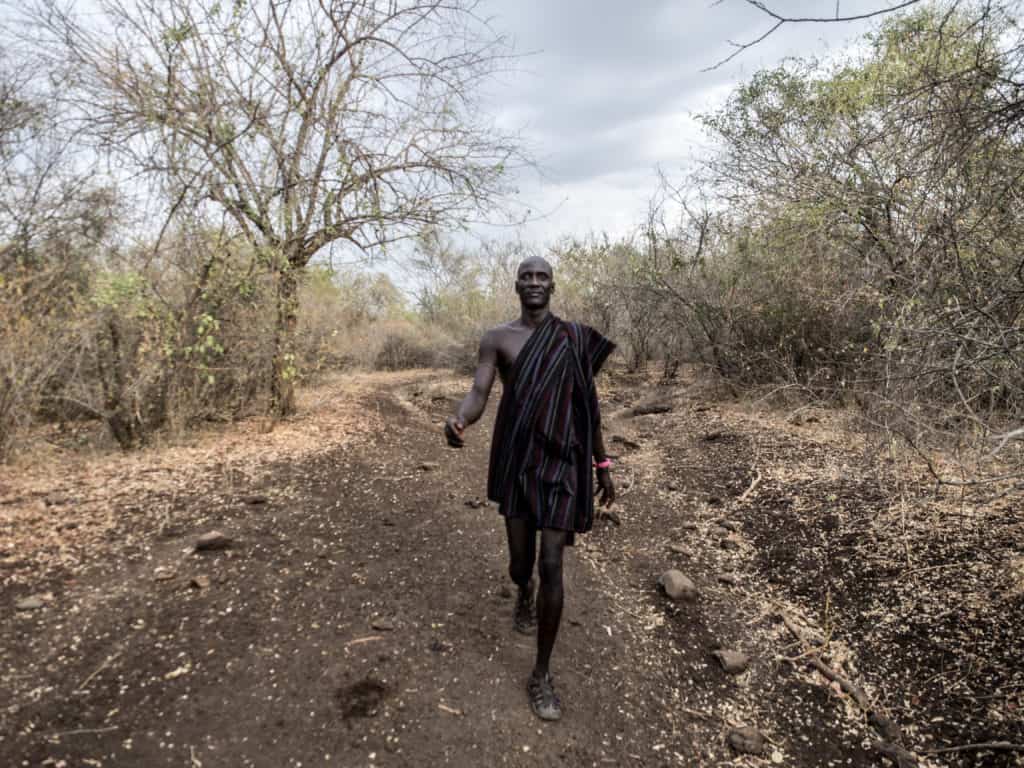
As we rumbled over the unpaved roads, leaving a wake of sand and dust, we started passing by men in war paint and coated with sand all over their body, with peculiar clothing, and armed with a long wooden stick walking the other way. We passed one and then two and the stream kept coming. I knew there must’ve been something going on.
Do we stay or do we go?
Intense debate started between our guides and Chief Nogali. At this point we didn’t know what was going on but we soon found out about Donga. We pulled over to discuss and the situation was this. The guides had planned for us to visit a market and another tribe but this once a year Donga tournament would put a dent into those plans and would also cost extra money. With the full story in our hands, it was a no brainer what we wanted to do.
Fate was on our side because with the help of Chief Nogali whom he himself was a two time champion of Donga, he guided our driver, Billy, back around the way we came.
Suddenly we stopped.
At first I wasn’t sure why but as we watched a few warriors disappear in the thick African bush, I knew where we were headed.
I guess we’re off to see a Donga stick fighting tournament
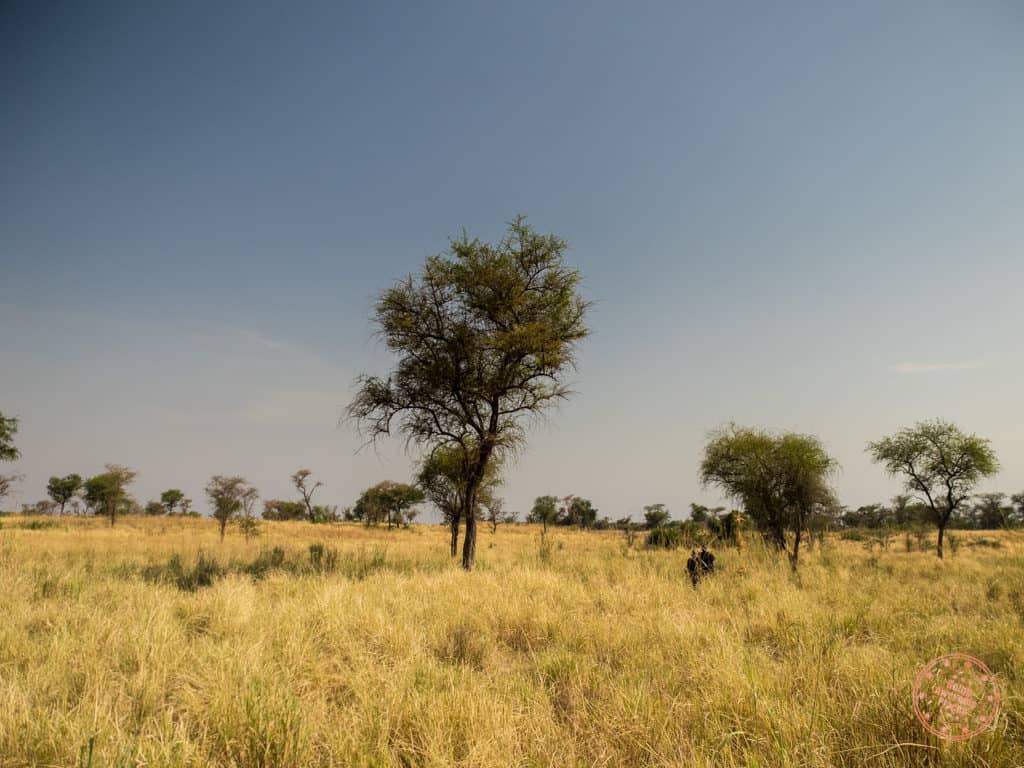
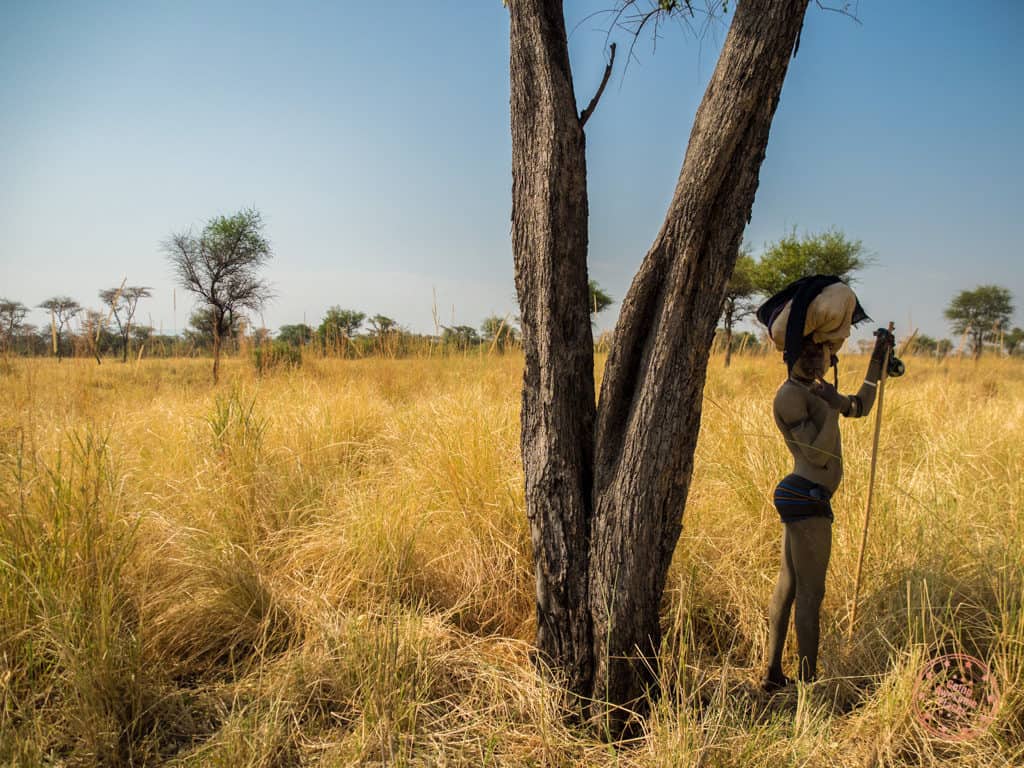
Well at least I thought I did. Under the sweltering heat, we marched through grassy lands and every so often a fighter would pass us.
Wearing shorts turned out to be a big mistake on this day. Halfway through this good 40 minute hike, we had to navigate through thorny bushes. My clumsy self wasn’t able to stay away and ended up getting my left ankle cut. I bandaged myself quickly but it wouldn’t hold and as we continued to make our way, my paranoia of disease and infection started to take hold.
We passed through a small village along the way where Nogali seemed to know everyone. We kept marching forward seemingly to nowhere. Then like an oasis in the middle of the desert, we could see a large grouping of bodies by the trees and could hear the faint sound of a whistle.
Let’s be clear though, we were still officially in the middle of nowhere. The reason for the secrecy is that this type of fighting is outlawed by the government.
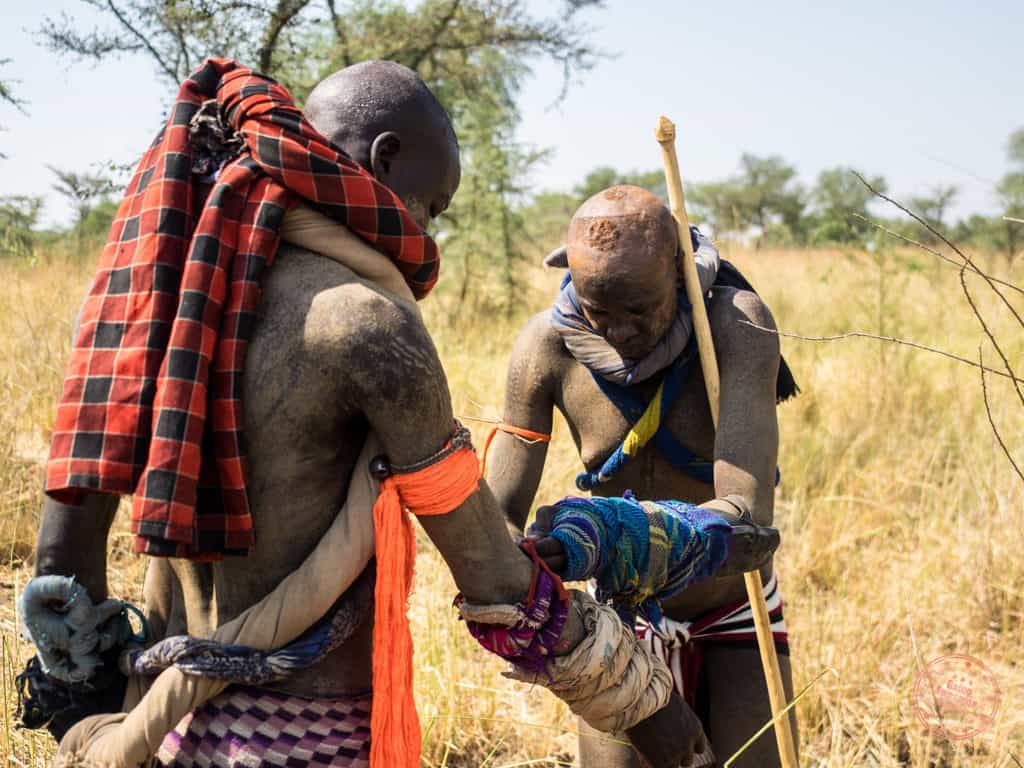
The chaos of Donga
Trying not to be distracted by my cut and fumbling between my GoPro and my camera, I started snapping and taking in what I could. I remember it being all too fast to follow. There were warriors gearing up in one corner and in another corner there was the intense clashing of sticks.
Fighting would start. Whistles would blow. Bells would jingle. The crowd cheered on.
Do I record? Do I take photos?
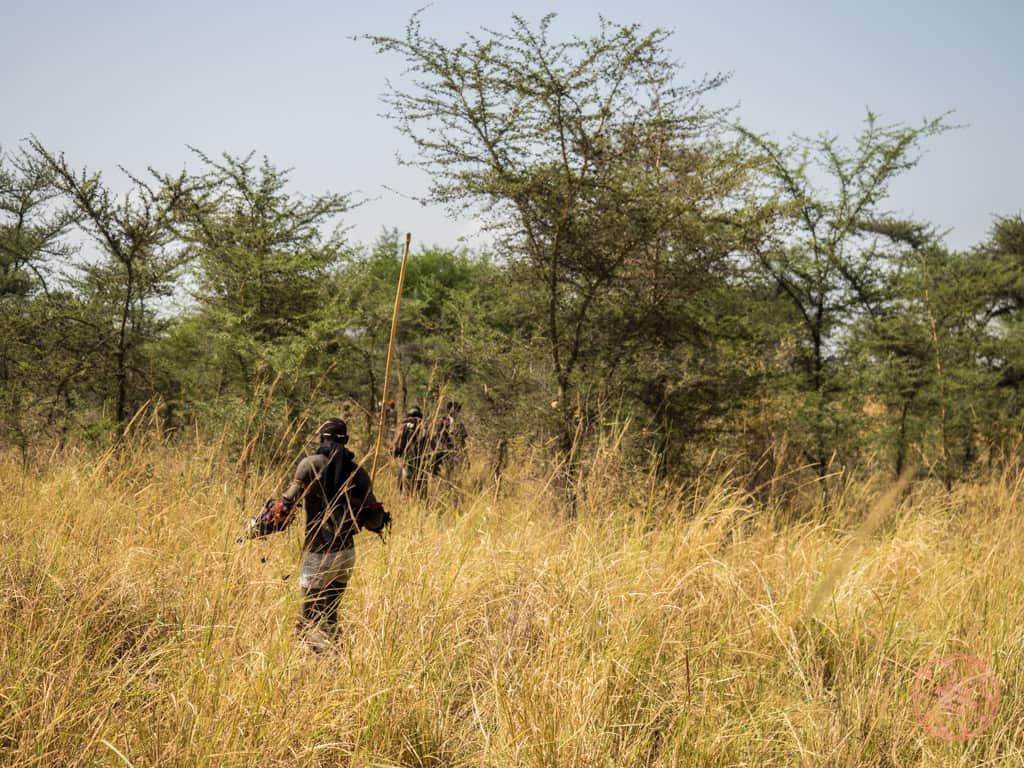
The flow of the fighting would climb to a crescendo and then abruptly stop.
All of a sudden there seemed to be some commotion coming from the open area beyond the tree line and everyone started to flock over. One arena closed and another opened.
Intense fighting ensued as everyone seemed to want to get into the action. Even after some explanation, it didn’t look like there was a whole lot of logic to the fighting. Stoppages would happen after every 30 seconds. The flow of the fighting would climb to a crescendo and then abruptly stop.
The fighting intensifies
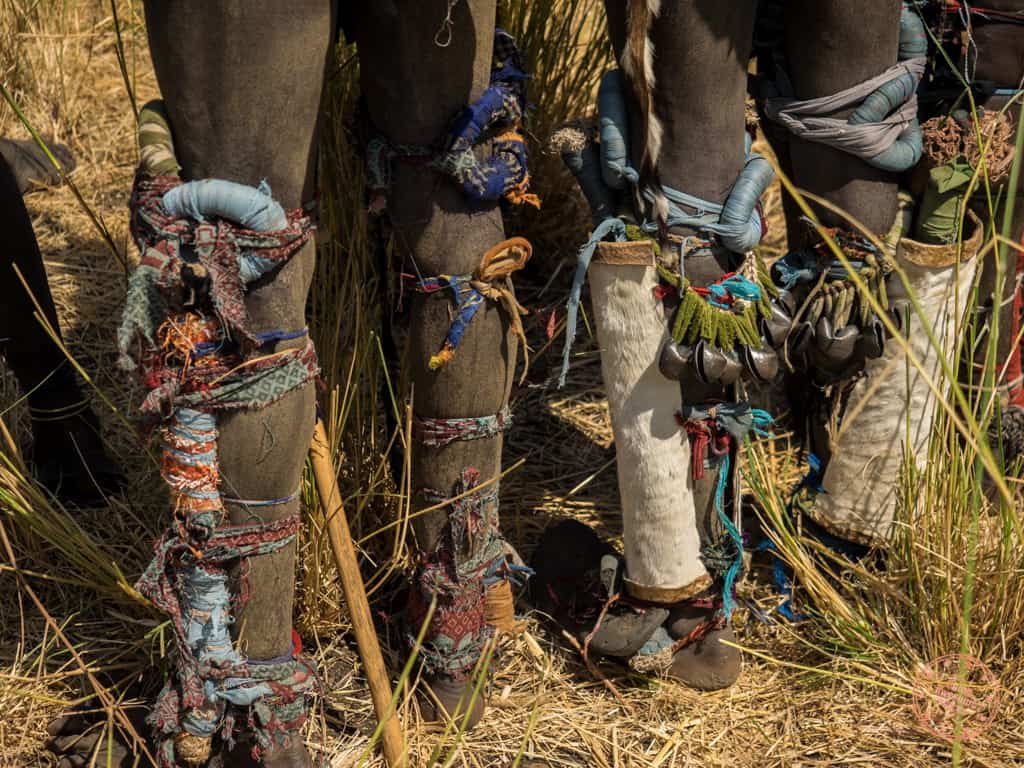

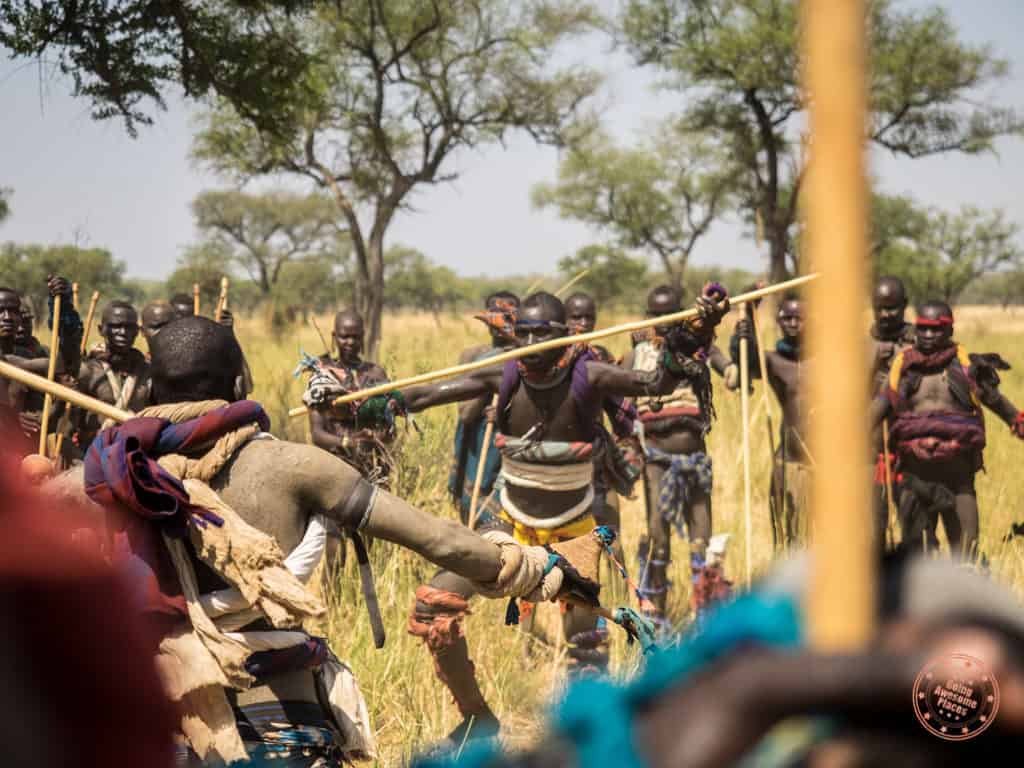


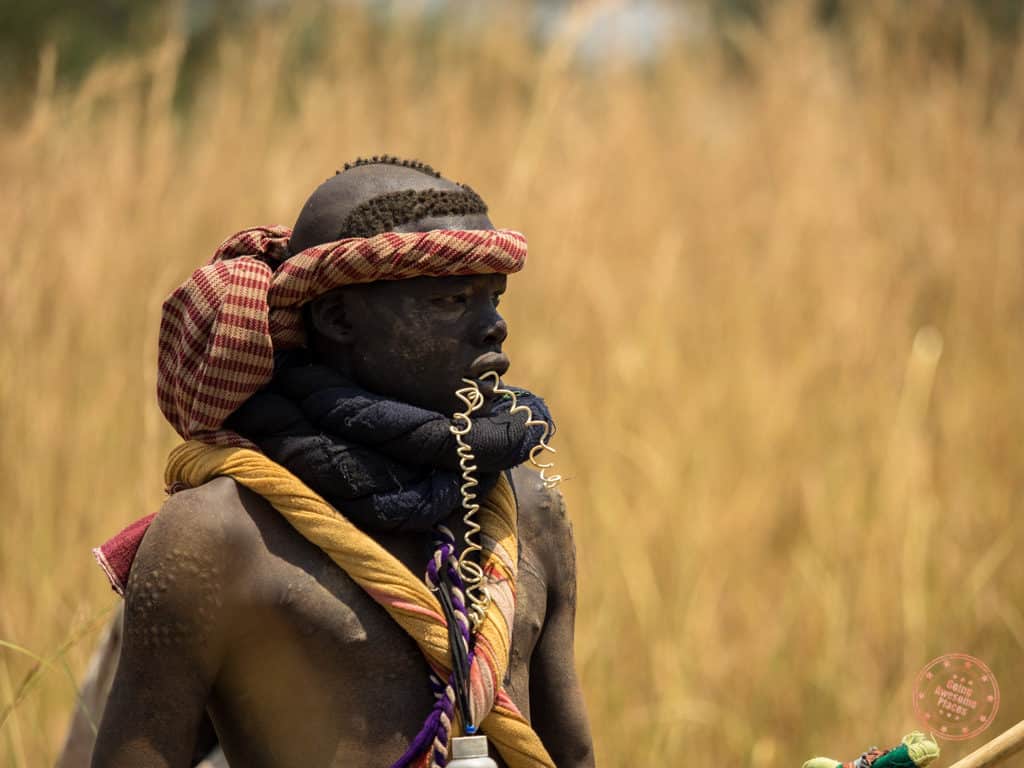
Trying to make sense of Donga
What I figured out was this. All fighting that took place was one on one with a tag team of sorts happening with each village having their team of representatives. With no limits to the armour except one’s access to random recyclables and twisted up fabrics, the two warriors would fight in the ring.
Like a boxing match, there would be a sizing up of the opponent and stick-type jabs before both warriors went all in. Intensity would climax to a point until someone was hit in some sort of off limits area or if armour started to unravel. At this point the referee would blow the whistle and separate the two fighters. Fellow tribe mates would rush out to assist before resuming fighting.
This went on and on.
What I never figured out was how a winner was ever declared especially for those evenly played matches nor how the next matchup was determined. Of course we also didn’t stay long enough to find out how they determined a final champion.
Brutality of Donga
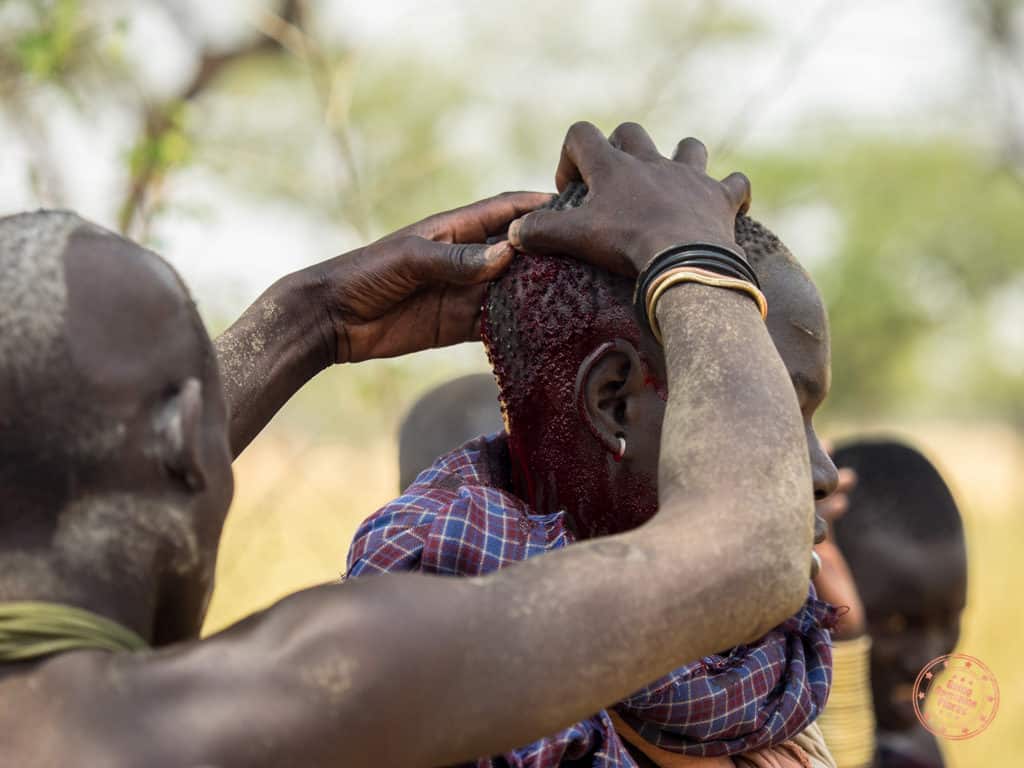
The brutality of the fighting was all too apparent as I spotted Mursi tribe members with deep gashes on their head where the stick’s blunt end made contact. You couldn’t help but wince every time there was a clap of lightning as one fighter made contact on his opponent. There weren’t any deaths while we were watching but with the way that they were going at each other, I wouldn’t be surprised if there were any by the end of the tournament.
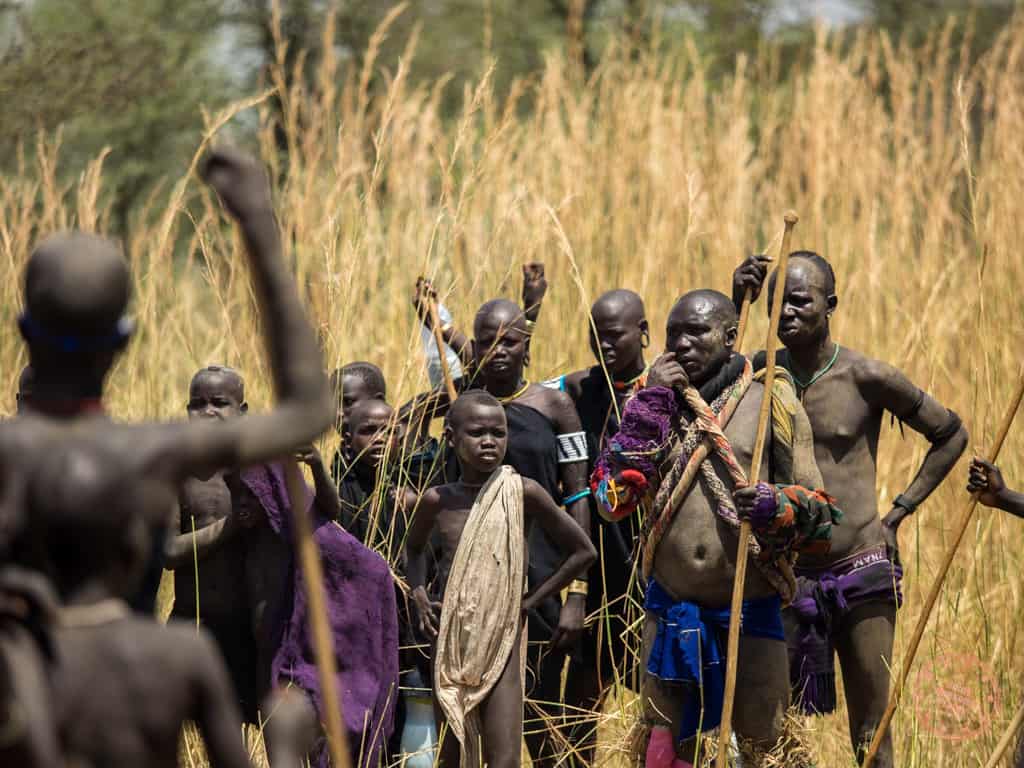
The crowds pour in
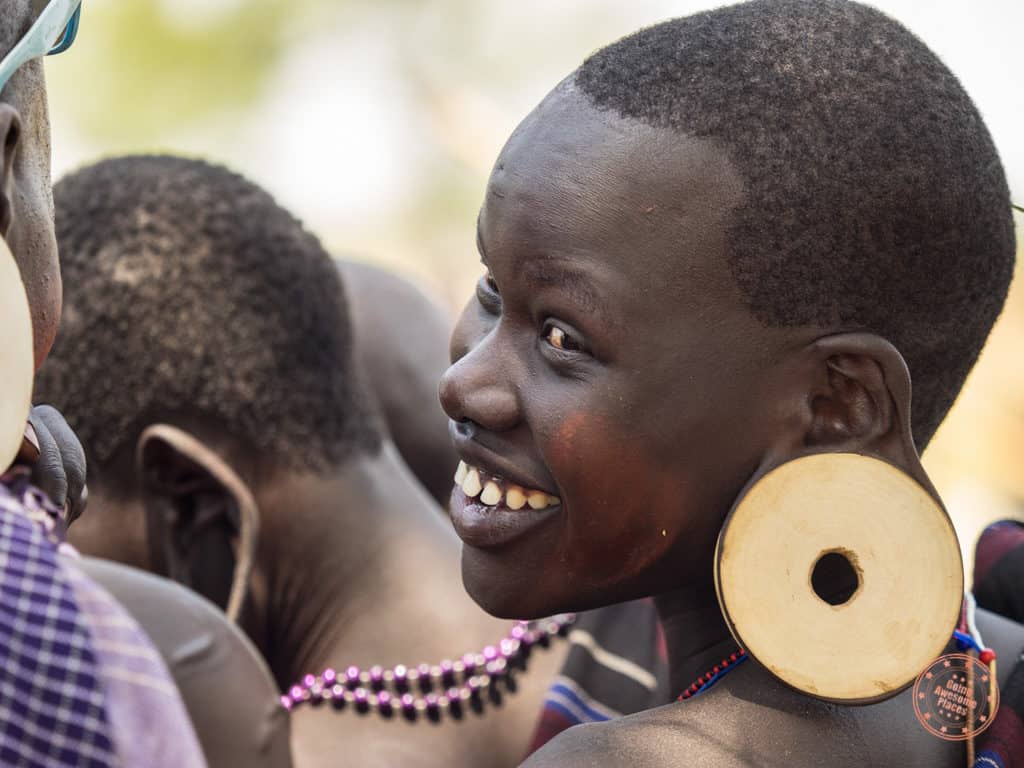
As the morning went on, local women and children started to come in from another entryway into the field. Word had spread out.
If that wasn’t enough to keep all my senses occupied, there were two rabid dogs in the crowd. Every once in awhile I would hear their aggressive gnarling. With a cut to deal with, I really didn’t want to get rabies. I tried my best to stay away but I knew that if it was meant to happen there wasn’t much I could do.
Our driver and second guide eventually found a closer route around the other side of the field and came with lunch in the form of injera in a black plastic bag. I ate what I could.
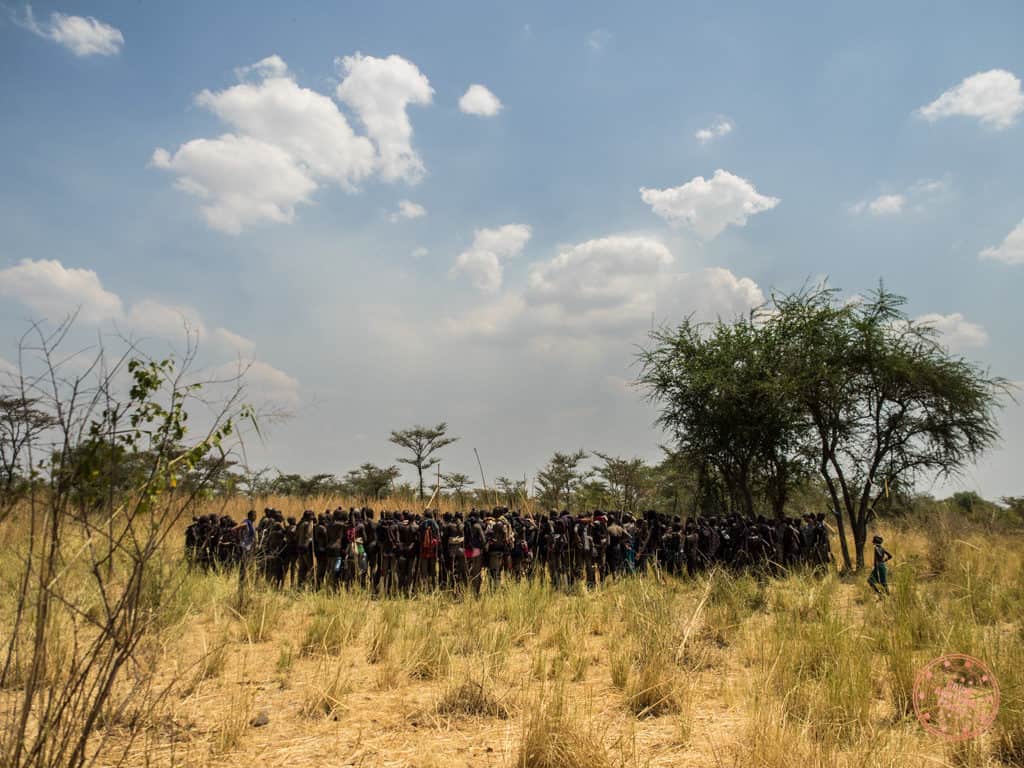
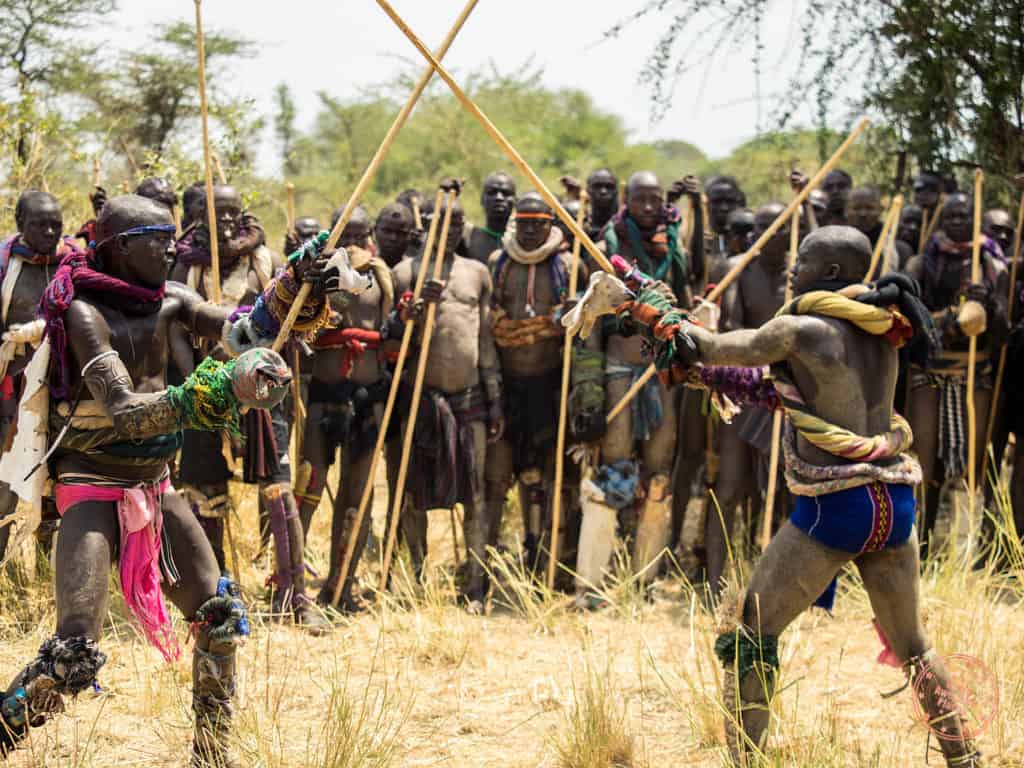
New challengers!
There was quite the dramatic entrance of a group of new challenges from another village. The other tribes took notice there was almost a warring of words in the form of chanting and dancing.
The entertainment wasn’t limited to just the fighting. Towards the end of our time there, a large group of tourists walked in but just as face as they came in, they left equally as fast. It turned out that they were also passing by and found out about the tournament. Their guide tried to arrange for admission at a low price (probably because it wasn’t included in their tour package) but was strongly refused by one of the chiefs and subsequently told to leave.
Soaked in sweat, we eventually decided to call it quits and head back to our car. At this point, the guides said their goodbyes. That’s when one of the tribe members spoke up and let us know that one of the fighters was dangerously injured. One man had sustained severe head trauma and looked to have a crack in his skull. They were looking to us for medicine. We walked back to the car and I offered my gauze, Advil and bandages. We never found out what happened to him.
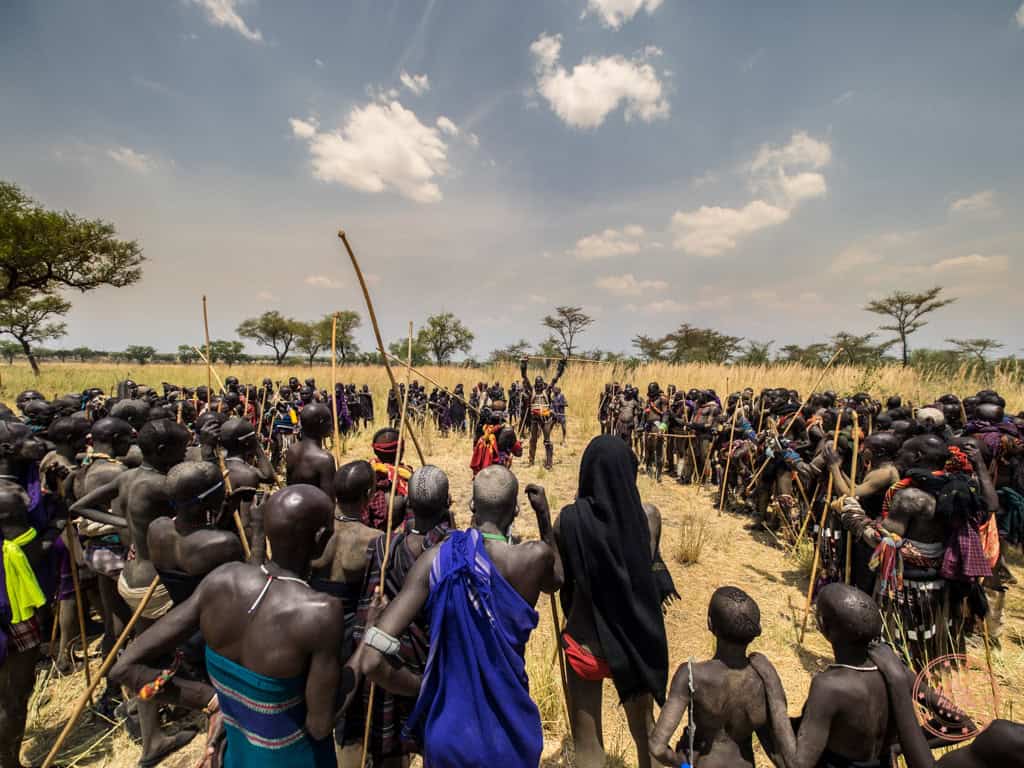
This was truly one of the most special moments in travel, this is one of those things that you really have to see and when you have time to reflect on it, you still can’t believe you beat the odds to be part of.
Looking to plan a trip to Donga?
So the question I’m sure you have is how do you plan a trip around this. The simple answer is that you don’t. The best you can do is talk to your Ethiopian guides while you’re planning to see if they have any inklings of when it might be.
Exclusive Offer with Travel Africa Tours

Readers that book with Travel Africa Tours and quote “Going Awesome Places” as a referral and copy my e-mail address at psyched at goingawesomeplaces dot com will receive complimentary 5-star accommodation upgrades in Addis on both ends of your itinerary.
Explore Travel Africa Tours
Oh and in case you’re wondering, my cut ended up healing fine and I did not get rabies. I do however recommend wearing long pants.
Travel Resources For Your Next Trip
If you’re in the process of planning your trip and putting together your itinerary, these are genuinely the best resources that the Going Awesome Places team stands by 100%.
Credit cards: Don’t get burned by hidden fees on top of terrible exchange rates. When we travel now, we use the Wise Card. Simply load it with the currency you need before you go and use it as a regular VISA or their digital wallet card. Use their free app to track how much you have and top up when you need to.
Flights: Of all the booking search engines, Skyscanner is the most helpful and easy to use thanks to their Everywhere feature. Kayak is also another that’s we will often check as well.
Car Rental: If you’re looking to save money, these car rental coupon codes will be a true game-changer. Otherwise, DiscoverCars and RentalCars are great places to start.
Airport Parking: You’ll need a spot to leave your car at the airport so why not book a spot at a discount. Use code AWESOME7 to get at least $5 off at Airport Parking Reservations or Park Sleep Fly packages.
Data: We’ve been a huge fan of wifi hotspot devices like PokeFi because their rates are so good and you can use it globally but recently, we’ve really loved using eSIMs. The best one is Airalo. Save money by getting region-specific eSIMs and use referral code WILLIA9500 to get $3 USD credit on your first purchase. Ubigi is another one that we’ve had success with where they uniquely offer 5G coverage. Use code AWESOME10 to save 10% on your first order.
Hotels: Our go-to is Booking.com because they have the best inventory of properties including hotels and B&Bs plus they have their Genius tier discounts. The exception is Asia where Agoda always has the best prices. TripAdvisor is also useful for reviews and bookings.
Vacation Rentals: Your first instinct will be to check Airbnb but we always recommend checking VRBO as well if you’re looking for a vacation rental.
Tours: When planning our trips, we always check both Viator and GetYourGuide to at least see what’s out there in the destination that we’re going to. They often have different offerings and prices so check both.
Travel Insurance: Learn how to buy the best travel insurance for you. This isn’t something you want to travel without.
- Insured Nomads – Popular insurance provider for frequent travelers and comes with great coverage and special perks.
- RATESDOTCA – Search engine Canadians looking for the cheapest insurance including multi-trip annual policies.
- SafetyWing – A perfect fit for long-term nomads.
- Medjet – Global air medical transportation.
- InsureMyTrip – Best for seniors, families, and those with pre-existing conditions.
If you need more help planning your trip, make sure to check out our Travel Toolbox where we highlight all of the gear, resources, and tools we use when traveling.
